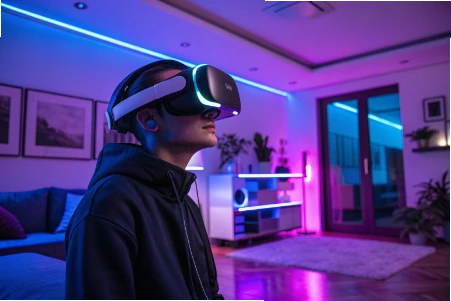
TECH
Samsung Unveils Galaxy XR — The Lightweight Mixed-Reality Headset Challenging Apple’s Vision Pro
In a decisive move to claim ground in the next frontier of computing, Samsung has officially unveiled the Galaxy XR, a lightweight mixed-reality headset designed to challenge Apple’s Vision Pro and redefine how users interact with digital and physical worlds. The launch marks Samsung’s most ambitious entry into the spatial computing space, signaling a bold step toward mainstreaming extended reality experiences.
A New Era of Immersive Design
The Galaxy XR stands out for its featherlight construction and ergonomic design—two key areas where early adopters felt Apple’s Vision Pro fell short. Built in collaboration with Qualcomm and Google, the device features a Snapdragon XR2+ Gen 2 chipset, ultra-low-latency spatial tracking, and 4K micro-OLED displays that deliver lifelike visuals with exceptional clarity.
Samsung emphasized the headset’s comfort-driven engineering, touting it as “powerful enough for professionals, light enough for everyday creators.” This focus on wearability and usability suggests Samsung is targeting a broader audience, aiming to bridge the gap between high-end professional headsets and consumer-ready XR devices.
Strategic Collaboration Across the Ecosystem
The Galaxy XR is more than a hardware release—it’s part of Samsung’s larger ecosystem play. By integrating with Galaxy smartphones, tablets, and smartwatches, the headset creates a seamless cross-device experience that enables users to access content, collaborate virtually, and control smart environments with intuitive gestures.
Google’s involvement in the software layer ensures access to an optimized Android-based mixed-reality platform, while Qualcomm’s custom chipset delivers the processing power necessary for real-time rendering, advanced hand tracking, and AI-enhanced spatial audio.
Positioning Against Apple’s Vision Pro
Samsung’s unveiling directly positions the Galaxy XR as a formidable alternative to Apple’s Vision Pro—particularly in pricing and accessibility. While Apple continues to target high-end professional users, Samsung appears focused on scalability, affordability, and daily usability.
Analysts view the launch as a pivotal moment in the mixed-reality landscape, with competition likely to accelerate innovation and push the boundaries of what immersive computing can deliver. “This isn’t just a product launch—it’s a statement of intent,” remarked a tech industry observer.
Redefining the Future of Interaction
The Galaxy XR represents more than a hardware milestone; it reflects Samsung’s long-term vision for spatial technology as a bridge between human creativity and digital intelligence. As mixed reality begins to influence work, education, and entertainment, the Galaxy XR could serve as the cornerstone of Samsung’s next decade of innovation.




